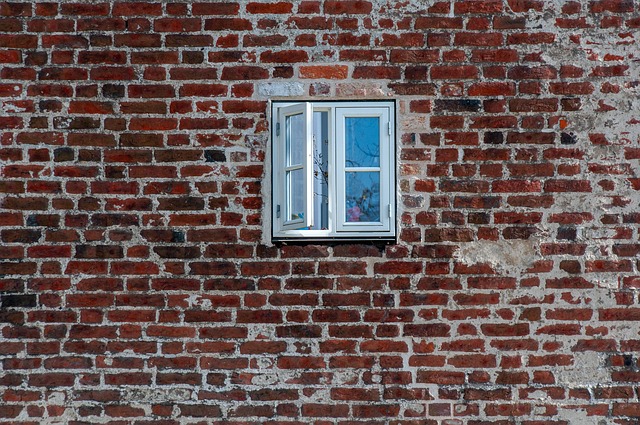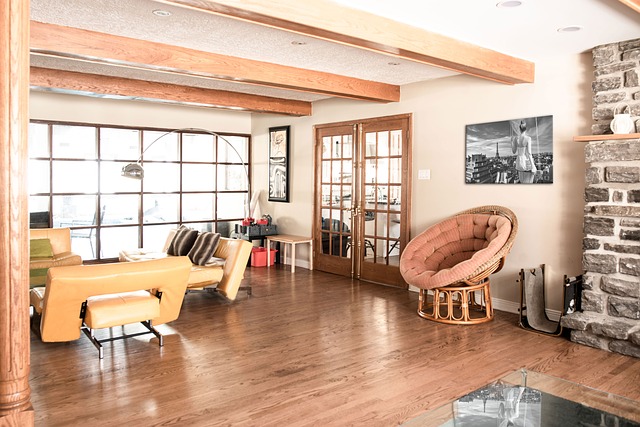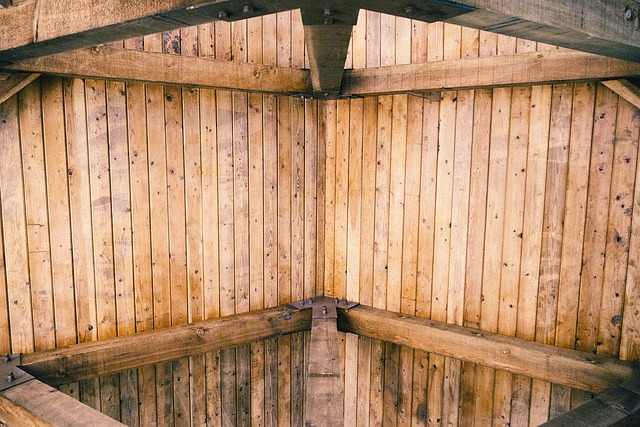Glue laminated beams surpass solid wood beams in strength and durability due to their multi-ply design with adhesive, offering superior load-bearing capacity, reduced warping/splitting, and longer lifespan. Efficient production methods and eco-friendliness make them a sustainable choice for construction projects demanding high structural integrity.
Laminated wood beams are revolutionizing construction, offering a superior alternative to solid wood with their remarkable strength and durability. This article delves into the numerous advantages of glue laminated beams, including efficient production processes that prioritize sustainability, unparalleled design flexibility, enhanced fire resistance, cost-effectiveness, and minimal environmental impact. By comparing glue laminated beams vs. solid wood beams, we uncover why builders are increasingly choosing this innovative solution for their projects.
- Strength and Durability: Laminated Beams Outperform Solid Wood
- Efficient Production: Glue Laminated Beams: A Sustainable Choice
- Flexibility in Design: How Laminated Woods Offer Unmatched Versatility
- Fire Resistance and Safety: A Crucial Advantage for Laminated Beams
- Cost-Effectiveness: Why Builders Choose Laminated Wood Beams
- Environmental Impact: The Eco-Friendly Alternative to Solid Wood
Strength and Durability: Laminated Beams Outperform Solid Wood

When comparing Glue Laminated Beams vs Solid Wood: Strength and Durability emerge as key differentiators. Laminated beams, constructed by gluing together multiple layers of wood, offer superior structural integrity compared to solid wood. This multi-ply design distributes weight more efficiently, resulting in higher load-bearing capacity. The adhesive used in the lamination process strengthens the entire beam, eliminating weak points found in solid wood. Moreover, laminated beams are less prone to warping or splitting due to their composite structure, ensuring long-term stability and durability.
While solid wood beams have their aesthetic appeal, they often require more maintenance and may not be as suitable for heavy structural loads. For projects demanding superior strength and longevity, laminated beams provide a compelling alternative. Give us a call at (607) 369-9341 to discuss how this innovative construction material can benefit your project.
Efficient Production: Glue Laminated Beams: A Sustainable Choice

Efficient Production and Sustainable Choice: Glue Laminated Beams
In the construction industry, the choice between glue laminated beams and solid wood beams is a critical one, with each option presenting unique advantages and disadvantages. When it comes to efficient production, glue laminated beams stand out as a sustainable choice. This innovative method involves gluing together multiple layers of wood, creating a beam that surpasses the strength and durability of its solid wood counterpart. The lamination process not only enhances structural integrity but also reduces waste, making it an eco-friendly option.
In terms of Glue Laminated Beams vs Solid Wood: Strength & Durability Comparison, laminated beams consistently outperform solid wood. They offer superior load-bearing capacity, making them ideal for challenging architectural designs. Moreover, the lamination process ensures consistent quality and performance, eliminating the variability often associated with natural solid wood. By choosing glue laminated beams, builders can achieve long-lasting structures that are designed to withstand various environmental conditions. For more information on how this choice can benefit your construction project, give us a call at (607) 369-9341.
Flexibility in Design: How Laminated Woods Offer Unmatched Versatility

Laminated wood beams offer unmatched versatility, providing architects and builders with a wide range of design possibilities. One of the key advantages over traditional solid wood beams is their flexibility in structural configuration. Glue laminating techniques allow for the bonding of multiple layers of wood, creating beams that can be customized to meet specific load-bearing requirements. This method ensures uniform strength across the beam’s cross-section, enabling designers to span greater distances with fewer support points.
In contrast, solid wood beams are inherently more limited in terms of design freedom due to their natural variations in density and strength. Solid wood also tends to expand and contract with changing humidity levels, potentially leading to structural issues over time. Laminated beams, on the other hand, offer improved dimensional stability and can be engineered for specific applications, making them a superior choice for modern construction projects that demand both aesthetics and functionality. For instance, their uniform density ensures consistent performance under load, addressing concerns often associated with solid wood’s variability.
Fire Resistance and Safety: A Crucial Advantage for Laminated Beams

Fire Resistance and Safety: A Crucial Advantage for Laminated Beams
When comparing Glue Laminated Beams vs Solid Wood in construction, one critical aspect to consider is fire resistance and safety. Laminated beams are a game-changer in this regard, offering superior structural integrity and protection against the devastating effects of fire. The advanced manufacturing process of glue laminated beams ensures a robust connection between layers, making them far more resistant to heat and flame than their solid wood counterparts. This advantage is particularly significant in commercial and residential buildings where fire safety is paramount.
Laminated beams’ composition allows for a more uniform distribution of weight and load-bearing capacity, reducing the risk of structural failures during a fire. Moreover, the use of modern adhesives enhances their strength and stability, providing an effective barrier against the rapid spread of flames. Unlike solid wood, which can be more susceptible to warping, cracking, or burning, laminated beams maintain their integrity under extreme conditions, ensuring the safety of occupants and the overall structural soundness of the building. For enhanced fire protection, consider visiting us at 18 Clifton St, Unadilla, NY 13849 anytime for expert advice on glue laminated beams and their benefits in construction.
Cost-Effectiveness: Why Builders Choose Laminated Wood Beams

Builders often face the dilemma of choosing between glue laminated beams and solid wood beams for structural integrity. Cost-effectiveness is a significant factor in this decision, especially when considering long-term savings. Glue laminated beams offer a compelling case due to their superior strength-to-weight ratio and enhanced durability compared to solid wood. This advancement in beam fabrication results in reduced material waste and lower production costs, making them an attractive option for cost-conscious builders.
In a Glue Laminated Beams vs Solid Wood: Strength & Durability Comparison, the advantages of laminated construction become evident. The use of advanced adhesives and careful design ensures beams with exceptional structural integrity while minimizing material usage. This is particularly beneficial in projects where space optimization and budget constraints are key considerations. For builders looking to explore cost savings without compromising on quality, laminated beams present a compelling alternative to traditional solid wood options, as highlighted by various industry sources and expert opinions available at unalam.com.
Environmental Impact: The Eco-Friendly Alternative to Solid Wood

In terms of environmental impact, Glue Laminated Beams present a compelling eco-friendly alternative to solid wood beams. The production process involves advanced gluing techniques that bind multiple layers of wood together, reducing the need for extensive logging and milling required for solid wood. This not only conserves natural resources but also minimizes waste, as laminating uses the entire tree without generating remnants or scraps. Unlike solid wood, which can be more susceptible to warping, cracking, or splitting due to variations in moisture content, glue laminated beams offer superior dimensional stability. This longevity ensures their structural integrity remains consistent over time, reducing the risk of unforeseen repairs or replacements.
When comparing Glue Laminated Beams vs Solid Wood, the former emerges as a stronger and more durable option. The uniform composition of laminated beams contributes to their overall strength, making them ideal for load-bearing applications. Moreover, their manufacturing process allows for precise control over dimensions and properties, ensuring they meet specific design requirements. Visiting us at 18 Clifton St, Unadilla, NY 13849 anytime can provide further insights into how these innovative beams are reshaping the construction industry with both structural reliability and environmental consciousness in mind.
Laminated wood beams, particularly glue laminated beams, offer a compelling alternative to solid wood in construction. Their superior strength and durability, coupled with efficient production methods, flexible design options, enhanced fire resistance, cost-effectiveness, and reduced environmental impact, make them an increasingly popular choice among builders. When considering the advantages of glue laminated beams versus solid wood beams, it’s clear that this innovative material is revolutionizing the industry, providing both structural integrity and sustainability.














